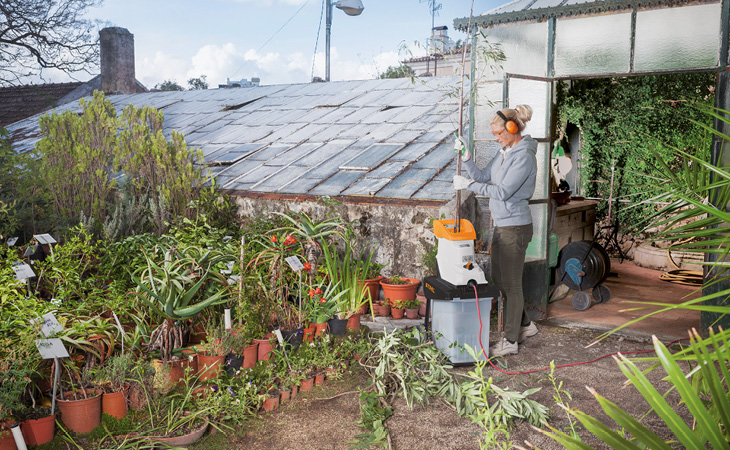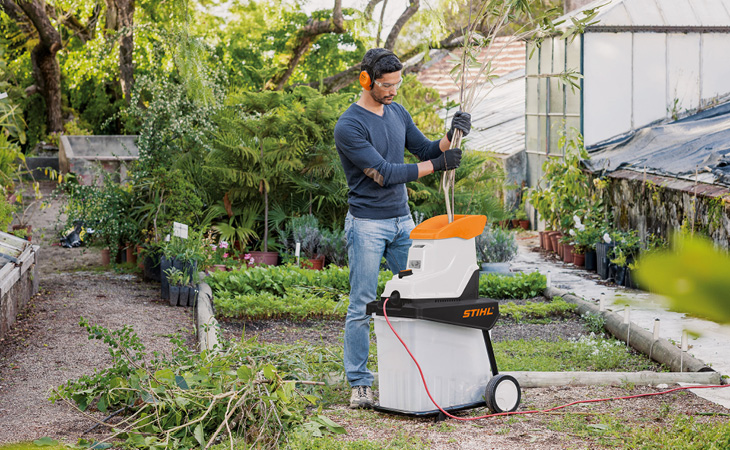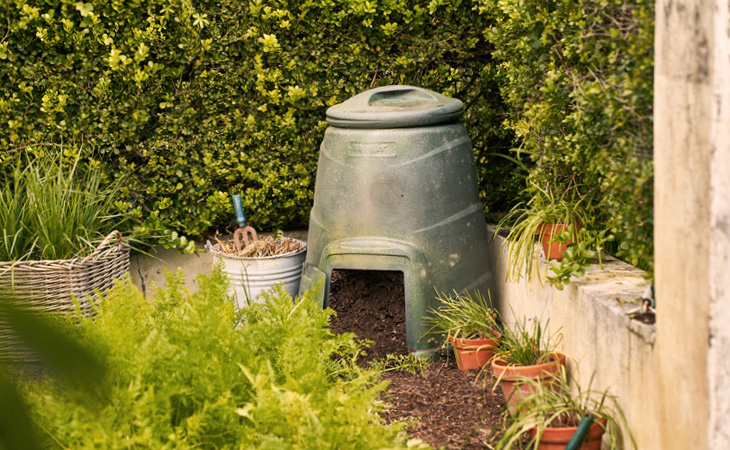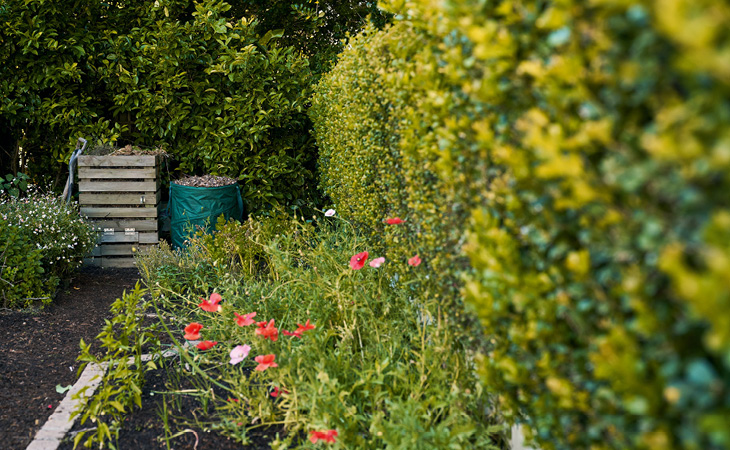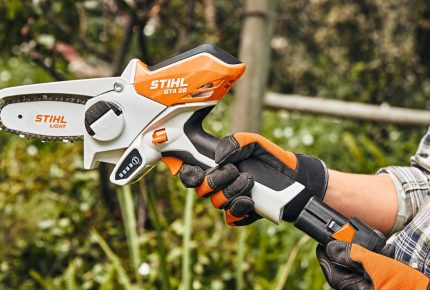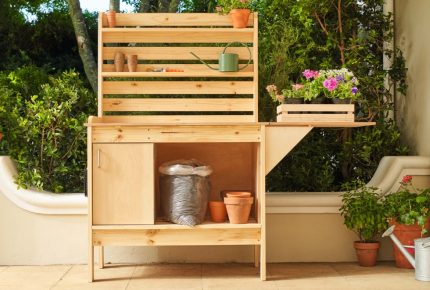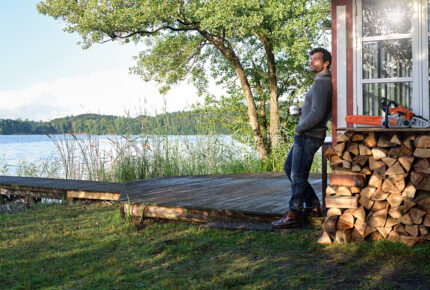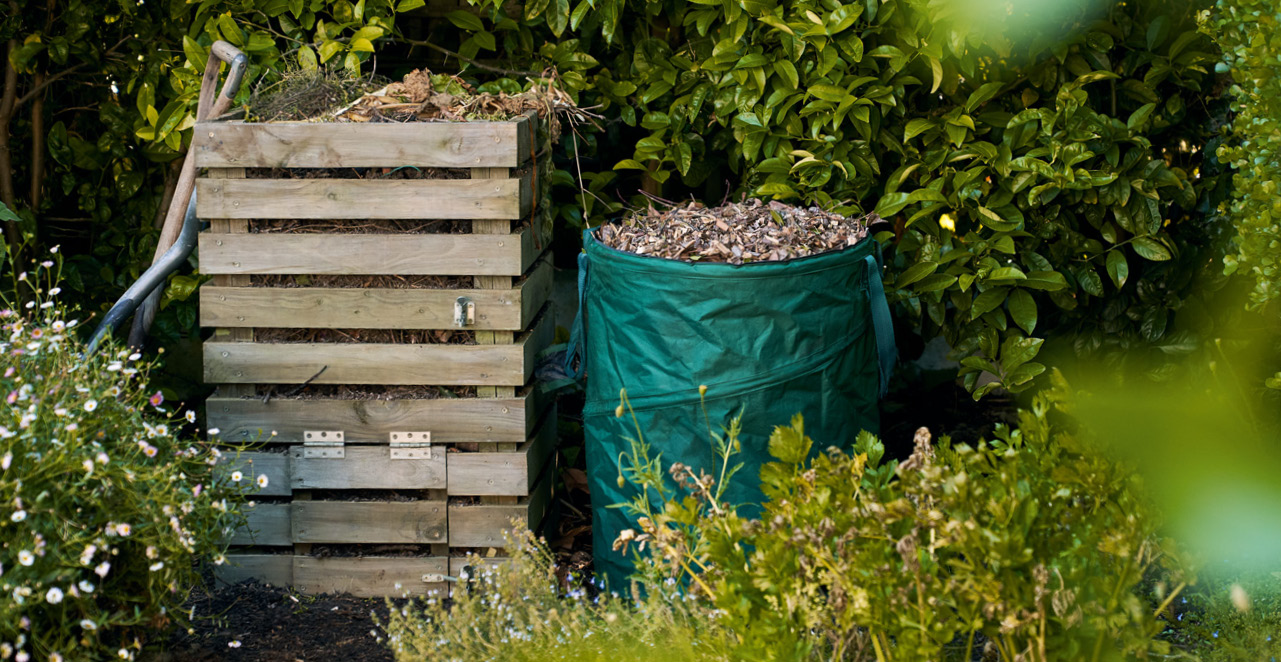
#How To
How to Make Your Own Compost
A good compost can take anywhere from three to six months to develop, so the start of Autumn is a great time to begin. It will also ensure your mix is ready in time for Spring. Making a good compost is much easier than it sounds, and, if done correctly, your garden and plants will reap the benefits for years to come. It will also save you space in your green bin (or a trip to the tip!) by providing a place for you to dispose of the leaf litter and the debris that accumulates during Autumn and Winter.
Read on to learn how shredding your garden waste can halve the time it takes to make compost.
How is compost different from mulch?
Compost is a collection of decomposed organic matter, which makes a great natural, nutrient rich fertiliser for your garden. It can be used as a substitute for mulch, a top dress for your lawn or a healthy addition to your potting mix. Compost is essential for microbial activity.
Mulch, on the other hand, does not get dug into or mixed with soil. It goes on top, helping to retain soil moisture and prevent weeds. The optimum depth for mulch is 50-75mm. Any less and it’s not as effective, anymore and it can prevent rainfall from getting to the roots (as well as a host of other fungal and heat related issues).
Both compost and mulch play an important role in plant care, and can be created with the help of a STIHL garden shredder.
Why shred?
Reducing garden waste with a shredder can reduce it by up to 75 percent. It also oxygenates mulch and increases its surface area, which naturally helps it to break it down faster if composting. The self-feeding STIHL GHE 135 L electric shredder makes fast work of all your garden clippings and branches up to 35mm thick – just one in STIHL’s extensive shredder range. Turning waste into black gold has never been easier.
What makes up a good compost?
A good compost is made up of four key components: green matter, brown matter, oxygen, and water.
Green matter
Leafy greens and lawn clippings will add nitrogen to your compost pile, which will then grow and reproduce organisms to oxidise the carbon (brown matter). These additions are often green and wet – think vegetable scraps, lawn clippings and weeds from your garden. Avoid too many green ingredients however, as excess can result in a foul smelling, rotting pile, instead of a composting one.
Brown matter
Brown and dry natural ingredients such as fallen leaves, hedge clippings and shredded branches will supply your pile with carbon for energy (heat). These dry materials are very important to the success of your compost pile, but once again, if you over index on the amount you add in, it will take far too long to decompose and your compost won’t be ready in time for Spring.
Oxygen
Just as important as the ingredients themselves, your compost needs air. For this reason, its best to avoid containers or tubs that have sides, and do not position your pile in a trench. A compost heap or well-aerated enclosure is best.
Shredding your materials beforehand will also facilitate airflow and reduce the need to turn your pile so frequently.
TIP: Put your garden waste through your shredder two or even three times for optimal mixing and aeration.
Water
Your compost pile will need light, regular watering roughly every fortnight, unless you live in a typically dry part of the country. It is important that there is enough moisture to aid the decomposition of organic matter, however too much will leave you with a soggy mess. Once again, shredding materials before they are added to your compost pile will help the matter to absorb the water and in turn, help the materials to decompose.
Here is a quick list of what should and should not end up in your compost:
DO ADD:
- Vegetable scraps
- Weeds
- Onions
- Light layers of grass cuttings
- Tea leaves
- Newspapers
- Saw dust
- Ground coffee
- Egg shells
DO NOT ADD:
- Anything artificial, such as metal or glass
- Bread
- Large branches
- Treated paper, such as glossy magazines
How to create your own compost in five steps:
- Find a suitable area for your compost, making sure it is in the shade and well drained. Earthworms are beneficial to your compost so it important that your pile is connected to a well-drained patch of ground, and not inside a tub or box. It should be accessible, but not in a location where ripe smells or leaching liquids will cause offence. A little sunlight is also good.
- Layer your site with coarse materials such as twigs and small branches, this will allow water to drain effectively.
- Add a layer of green matter, followed by brown matter including some newspaper. Add a light sprinkle of water after each layer before you add the next.
- If you have some compost or soil handy, sprinkle some of this on top to give it a boost. TIP: This will also reduce any odours, which are typically noticed in the early days of a new compost pile.
Lastly, maintain your compost by turning the pile every few weeks to allow the air to penetrate the organic matter. Remember, a good compost can take up to three months to be ready for use, so it’s never too early to make a start.
You’ll know your compost is ready when you see a dark coloured, spongey, soil-like matter at the bottom of your compost heap. Time to feed your plants!
Click here for more garden projects to keep you busy and active at home.

